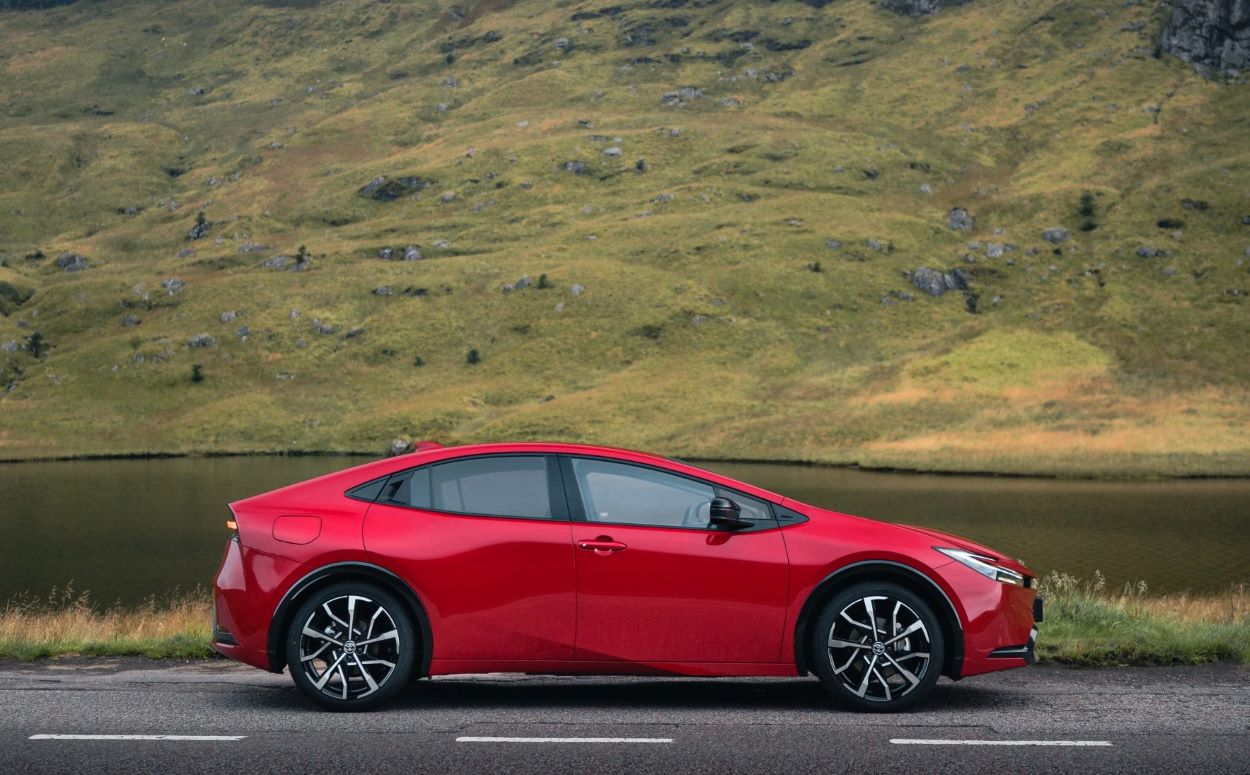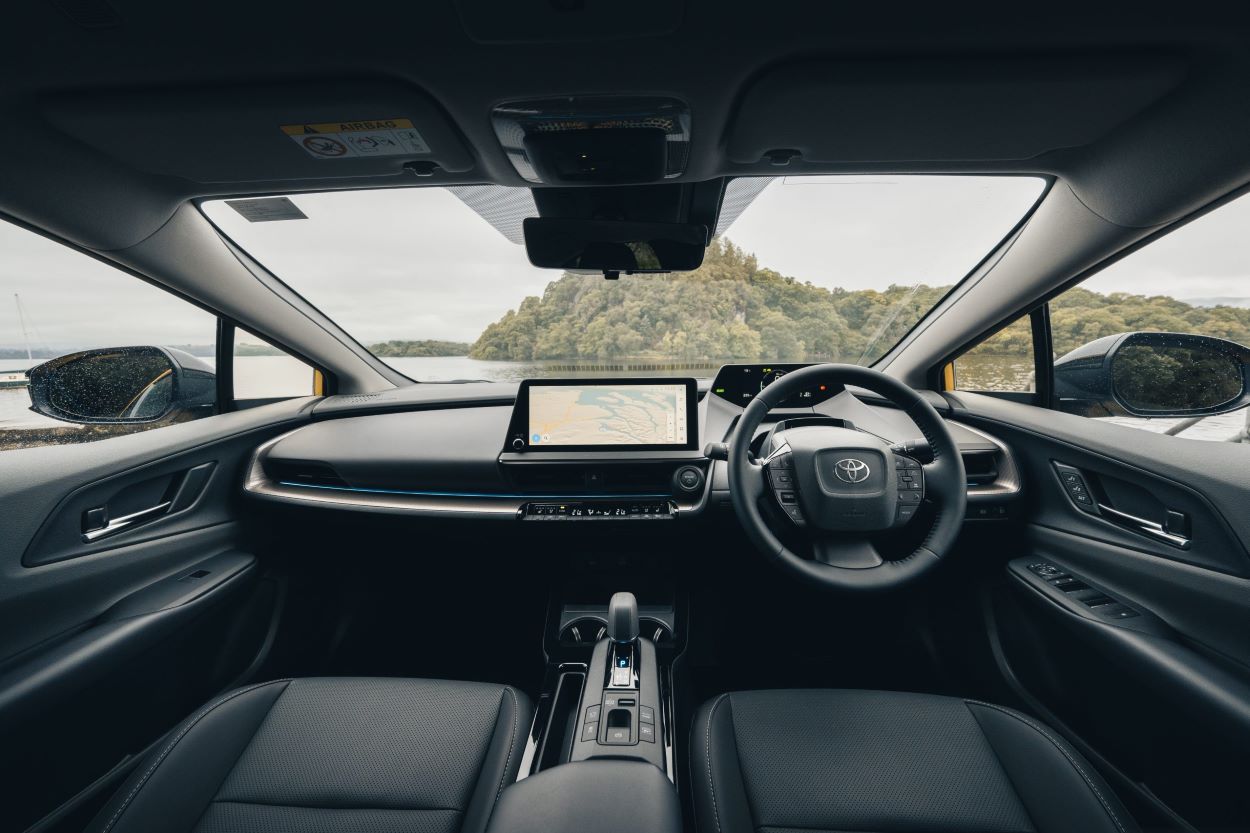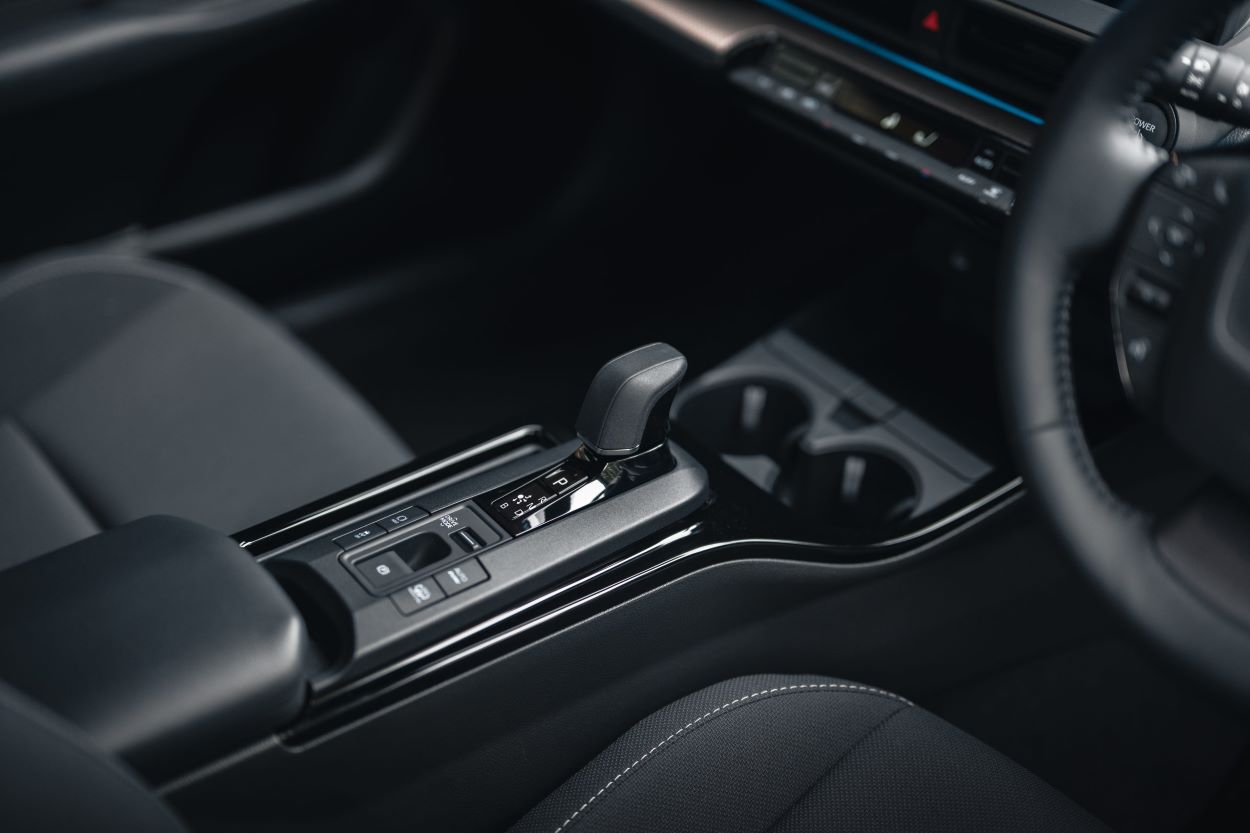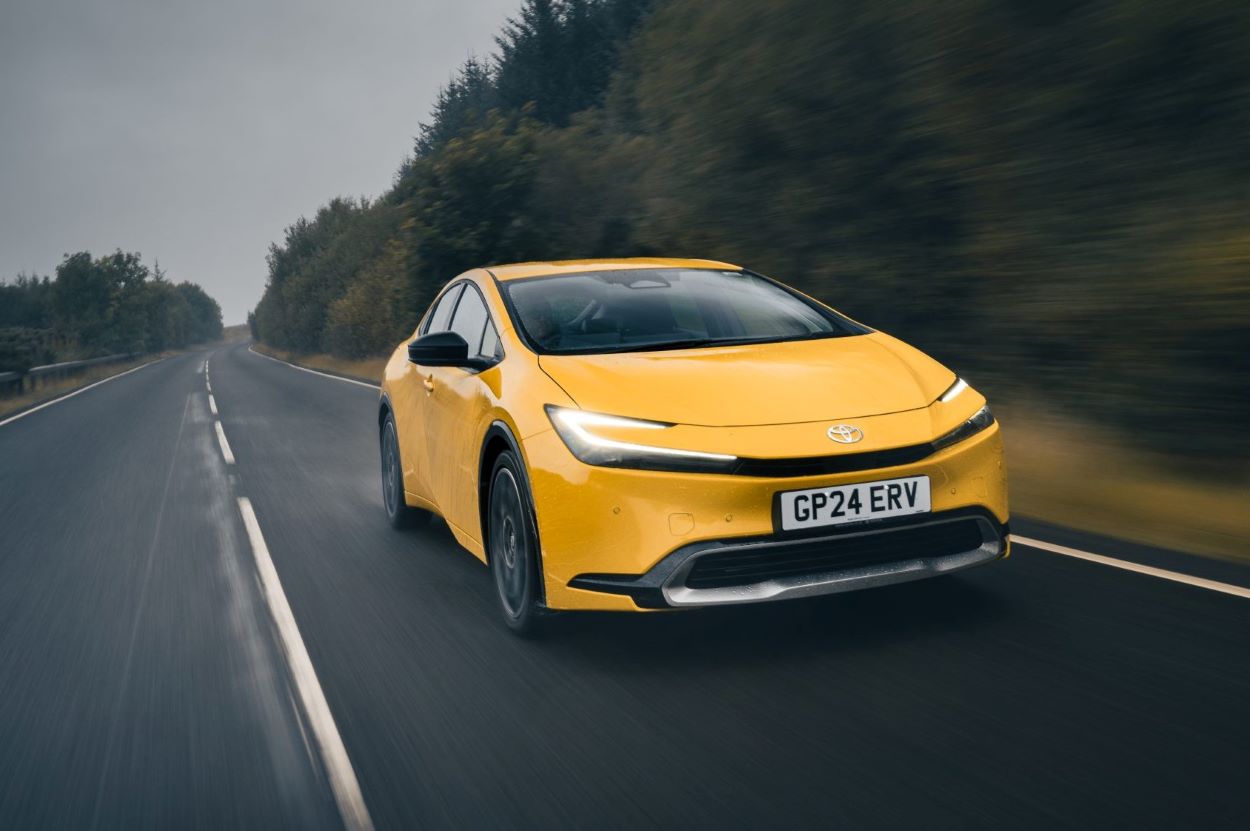
Complete peace of mind for less
• Cheaper than AA Price Guarantee^
• We get to most breakdowns in 60 mins or less
• Our patrols fix 4/5 breakdowns on the spot

The Toyota Prius is a hybrid car icon, and is now back on sale in the UK. But does it still make sense in 2025? Lawrence Allan drives it to find out.
Things you'll like
- Surprising performance
- Good ride and handling balance
- Strong efficiency
Things to consider
- Limited rear headroom and small boot
- Golf eHybrid has longer EV range
- No cheaper full hybrid option
What is the Toyota Prius?
The word ‘iconic’ is often overused in the modern world, but although its not the longest-lived car on the market there’s no doubt the Toyota Prius is a hybrid car icon.
The original model was the world’s first mass-produced hybrid when it launched in 1997. It started off as a bit of an oddity – a car celebrated for its unique (at the time) powertrain setup, but not quite understood by the car buying public at first glance – even if it did eventually sell well.
But it was the second-generation car that really hit the mainstream. Significant advancements in efficiency and driveability combined with a more practical design to make it the go-to car for everyone from the Hollywood elite to taxi drivers. It might have been a punching bag for old-school car enthusiasts, but by 2008 the Prius had racked up a million sales.
Fast-forward a decade or so and the then Mk4 Prius was still the default choice for private hire operators thanks to its smoothness, fuel-sipping capability and fantastic reputation for reliability. But the formula hadn’t changed much, and by then Toyota had expanded its ‘Hybrid Synergy Drive’ to other models in the range – the Corolla served fleet-focused buyers better, and models like the C-HR appeal more to private customers.
The Prius had served its purpose in bringing hybrid tech to a wide global audience, but with hybrid options becoming widespread and a concerted push towards electric cars it dropped off in the sales charts. So much so, that by the time the Mk5 Prius was revealed in 2023 Toyota threatened not to offer it in the UK at all.
That decision was reversed in part, with only the plug-in hybrid version of the new Prius being offered here. A more striking design combined with big performance gains is all well and good, but is it still relevant today? We’ll find out in this Toyota Prius review.
Verdict: is the Toyota Prius a good car?
In many ways the latest Toyota Prius is undoubtedly the most talented model yet. Behind the svelte new look, the biggest surprise is the genuinely enjoyable driving experience that combines performance, handling and comfort very well.
The Prius also feels built to last, comes well equipped and should be extremely cheap to run, even if its electric range isn’t as outstanding as the best on the market. The only letdown is the small boot and limited rear headroom. We’d also love to see how good a cheaper, lighter regular hybrid model would be – if only Toyota would bring one to the UK.
Pricing, specs & rivals
At the time of writing (January 2025) the Toyota Prius Plug-in starts from £37,315 in Design form, rising to £39,955 for the top-spec Excel trim.
That’s under the crucial £40k barrier that would make Prius buyers liable for the Expensive Car Tax supplement, and roughly on a par with rivals – for example, a Golf eHybrid is cheaper but needs speccing up to meet the Prius’s equipment tally.
While this Prius is also considerably more expensive to buy than the previous-generation non-plug-in model, it’s actually quite a bit cheaper than the old plug-in hybrid Prius when adjusted for inflation.

You also get plenty of standard kit for your money. Entry-level Design comes equipped with 17-inch alloys, keyless entry and start, dual-zone climate control, adaptive cruise control and a reversing camera.
However, Excel brings desirable extra such as heated, ventilated and electrically adjustable front seats, an electric tailgate, a digital rear-view mirror (with its own cleaning function) and 19-inch alloys.
Rivals for the Prius come in all different shapes and size – but none with such a svelte, coupe-like design. Closest are plug-in hybrid hatchbacks such as the Volkswagen Golf eHybrid, Audi A3 TFSI e, Peugeot 308 PHEV or Cupra Leon PHEV, but you also might want to consider alternatives such as the Kia Niro and Hyundai Kona PHEVs.
Toyota Prius: Interior comfort, quality & technology
The Prius’s sleek, coupe-like exterior certainly makes it cut a dash in an SUV-obsessed market. But the interior is much more conventional. It’s typical Toyota fare, borrowing switchgear and tech from cars like the C-HR but also adopting elements from the bZ4X electric car.
In the latter respect, it’s the driving position that’s most significant. Like the bZ4X (and Peugeot models) the dials are mounted higher and the wheel made smaller and set lower so you look over the wheel at the display rather than through it.
This driving position is less restrictive than in some Peugeots, but it still means certain drivers might find the wheel has to be adjusted too low to properly see the dials. We reckon most will be fine with it, though, and with all versions coming with electric lumbar adjustment (and Excel bringing electric seats) getting comfortable behind the wheel isn’t a chore.
Visibility is sacrificed a bit in the name of style. That steeply raked windscreen means front pillars that can restrict your view at junctions, and something like a Golf is much easier to see out of rearwards. Of course parking sensors and a standard reversing camera help mitigate this, as does the digital rear view mirror on Excel models.
Overall, though, the Prius’s cabin is a hassle-free environment. There are plenty of physical buttons to make things like adjusting the climate control or changing drive mode settings a doddle, and the layout is well thought out. Quality, too, is a notch above mainstream alternatives, if not quite at the levels set by BMW and Audi.

Infotainment, sat-nav, stereo and connectivity
Every Prius comes with a 12.3-inch touchscreen infotainment system mounted on a plinth high up on the dash. It’s a noticeable improvement on the system Toyota was using even a couple of years ago.
It’s bright, quick and clear rather than overly glitzy or distracting, so you won’t impress your mates with it. But with simple menu layouts (bar some awkward sub-menus) and icons close to the driver to let you switch between menus, it’s ideal for the more important task of accessing functions while driving.
The digital driver’s display is a bit disappointing. Sure, it’s easy to read and clear, but it’s basic and a long way off the impressively big and customisable system in the Golf, for example.
You get standard wireless Apple CarPlay in every Prius, but wired Android Auto and no wireless phone charging (odd, because other markets get it). You do get an impressive six USB-C charging ports, though, with four up front and two in the rear.
There’s no sound system upgrade available in the Prius, so it’s a good job that the standard system does a thoroughly decent job of punching out your favourite tunes.
How practical is the Toyota Prius?
The Prius is hardly cramped or useless at carrying luggage, but it’s not as roomy as you might expect for something that’s 4.6m long. Incidentally, that’s 46mm shorter than the previous Prius, while the roofline is also 50mm lower in the quest for efficiency-boosting aerodynamics.
There should be no complaints up front, as there’s plenty of legroom and good cabin width. While the roofline is much lower than an SUV or even a conventional hatchback, the seats adjust nice and low to make headroom an issue only for the exceptionally tall.
It’s in the rear seats where sacrifices have been made. Unusually for a new car the Prius is less roomy than its predecessor – perhaps an intentional decision to move it away from its old private hire customer base. Legroom is pretty generous for long-legged passengers, but the real issue is headroom – people over six foot will find their heads crammed against the roof unless they slouch.
At least you get an almost flat floor and a wide enough bench for three people, although middle-seat passenger will find even less headroom – Toyota’s own Corolla has more space. ISOFIX points are easily accessed behind pop out flaps, however.
Storage and boot space
Space for stowing odds and ends in the Prius is decent, with door bins big enough for large water bottles, a reasonable glovebox, big cupholders in the centre console and a phone storage area under the dash. This also houses a handy hidden compartment under the tray. Furthermore, the armrest houses a deep storage area that’s padded to stop items rattling around.

In the rear you’ll also find a decent pair of door bins, a pair of cupholders in the centre armrest and a pocket in the front seat back. No, that isn’t a typo – only the passenger seat has a storage pocket in its back, not the driver’s, oddly.
A lack of through-loading behind that centre armrest is also a bit of a pain, but at least the seats are easily folded and sit flat with the boot floor when down.
As for the boot itself, while the opening is long making the boot accessible for bulky items, it’s a shallow space – and that sloping rear window means while you can fit big boxes in there, you probably won’t be able to actually close the tailgate. The 284-litre capacity illustrates the issue. That’s more than the Golf eHybrid, but not exactly generous.
The space isn’t very wide, either, and nor do you get any underfloor storage – though the latter can also be said about the Golf. Still, one saving grace is an electric tailgate standard on Excel trim.
Performance & drive: What is the Toyota Prius like on the road?
Owners of older generation Toyota Priuses may have many reasons to like their cars, but outright performance probably isn’t one of them. With this new one, though, things are a bit different.
The 2.0-litre four-cylinder petrol engine’s 152hp output isn’t exactly generous on its own, but it combines with a punchy 161hp electric motor. All power goes through the front wheels through an ‘E-CVT’ automatic gearbox.
You can’t add those figures together to get the Prius’s total output because they won’t produce maximum power at the same time. But the combined 223hp output is significantly more than the old plug-in Prius, and the 0-62mph time of 6.8 seconds is over four seconds faster.
Yes, that’s right: from a standing start Toyota’s humble hybrid icon would keep up with a decade-old Ford Fiesta ST even if it’s unlikely to get your pulse racing as much. Power builds in a smooth, linear fashion, not unlike the way a similarly fast electric car might, with ample acceleration in reserve for overtaking.
Granted, the Prius doesn’t quite have the effortless torque of the Golf eHybrid, but that’s partly down to the gearbox.
It’s not a traditional CVT, despite the name, and it’s substantially improved over earlier efforts to boost response and refinement. But clog the throttle in an unruly fashion (in hybrid mode) and it’ll still send revs soaring uncomfortably high. The trade-off is commendably smooth cruising with none of the clunky gearchanges some PHEVs suffer from.
Although it’ll make itself heard under full throttle, in normal driving the petrol engine is barely noticeable when it fires into action. Kept in electric-only mode and the Prius will soar up to 84mph without the engine being required – although if you’re in hybrid mode you’ll need to be a super gentle with throttle inputs.
The Prius has regenerative braking to help pump a bit more juice into the batteries as you drive along. Its default adaptive setting detects what’s coming up (i.e. roundabouts, sharp bends and slower cars in front) to apply regen and smoothly drop your speed.
If you’d prefer manual control, nudge the gearlever from ‘D’ to ‘B’. This gives you a constant braking effect with three severity modes, although none offers full one pedal driving. If you’d prefer an old-fashioned brake pedal the response is natural-feeling.
Power, 0-62mph times
- Toyota Prius (both trims): 223hp, 6.8 secs
Ride and handling
Old Priuses provided nothing in the way of handling engagement while not offering an especially comfortable ride, either. The last-gen model was a significant improvement, particularly on the comfort front.
This new model provides another step forward, with genuinely well-sorted handling – you could even call it fun in certain situations. There’s plenty of grip, the steering is direct and gives you some idea of what the front wheels are up to, and there’s less body lean than in the old Prius. It’s one of the best driving plug-in hybrids on the market, if you discount the much pricier performance PHEVs out there.
That sophisticated driving experience extends to the ride, which is more settled than the Golf eHybrid too. While the 19-inch wheels of Excel spec can transmit the very sharpest jolts into the cabin, it’s smooth and serene for the vast majority of the time. Dynamically, this new Prius is a surprisingly difficult car to fault.
Noise and refinement
The Prius is a very refined and relaxing car whether you’re trundling through traffic jams or cruising the motorway. Its slippery shape (combined with laminated side windows on Excel trim) help keep wind noise to a barely noticeable minimum, while road noise isn’t intrusive even on the bigger 19-inch wheels.
Furthermore, while the Prius’ engine and gearbox combo can make a bit of a din when you floor it, it’s less intrusive than older models – partly because the engine is better insulated from the cabin, but also because the boost in performance means it doesn’t need to work as hard.

Euro NCAP: is the Toyota Prius a safe car?
The latest Prius has yet to be tested by industry body Euro NCAP, so we can’t definitively judge its crash performance and overall safety.
All we can say is that the underlying ‘TNGA’ platform is shared with several models including the previous-gen Prius and the current Corolla – both of which were five-star cars when tested.
Every Prius comes with the usual array of safety kit including automatic emergency braking with pedestrian and cyclist detection, lane keeping assistance, traffic sign recognition and blind spot monitoring. A driver monitoring camera further aids safety.
Adaptive cruise control with lane-change assist also features on both trims, as does a system called “Proactive Driving Assist” that gently applies braking and steering input in bends or when nearing other road users when the risk of a collision is high.
Fuel economy and running costs
Being a plug-in hybrid, the Prius comes with a remarkable-sounding set of official economy figures that should be taken with a pinch of salt.
Officially, the Prius manages up to 565mpg in the WLTP test regime in Design form, with the bigger wheels and slight weight increase of Excel trim reducing this to 403.5mpg. That’s some way short of the nigh-on incredible 941mpg quoted for the Golf e-Hybrid, but context is important here.
The reason why Golf’s figures are so much higher is that it has a bigger hybrid battery, meaning it can do more of the official test procedure under electric power thanks to its 88-mile range. The Prius’s 13.6kWh battery manages 53 miles on a charge – certainly enough for most people’s commutes.
In our experience this new Prius remains exceptionally efficient in real-world situations, even with a depleted battery, but as with all PHEVs its appeal over a regular Corolla hybrid (for example) depends on your journey profiles.
Mind you, company car buyers will make savings regardless thanks to the Prius’s 8% Benefit-in-Kind (BiK) band. That’s better than the 12% rating for the Peugeot 308 PHEV, but doesn’t match the 5% rating for the Golf.
How much does the Toyota Prius cost to insure?
The Prius should prove cheap to run in terms of fuel and tax costs, but insurance costs could be a bit higher than plug-in hybrid alternatives. Both Design and Excel trim sit in group 31, which is a few groups higher than an equivalent Golf eHybrid or Audi A3 45 TFSI e. Given it’s a unique model in Toyota’s line-up, and one that’s not likely to sell in big numbers, a relative lack of parts availability may be a factor here.
FAQs: minimum of 3
Does Toyota sell the Prius in the UK in 2025?
Yes, you can buy the latest generation Prius in the UK – albeit only in PHEV form. Toyota originally said the latest Prius wouldn’t come to the UK as it treads on the toes of the brand’s other hybrids (such as the Corolla) but reversed the decision when the plug-in hybrid model was launched.
Is the Toyota Prius a good car?
We reckon the new Toyota Prius is a likeable and refreshing car, with styling that’s much more desirable than before, a high-quality interior and a driving experience that’s far better than it’s ever been. It’s also seriously efficient and comes loaded with kit.
How much does the Toyota Prius cost in the UK?
With only the Prius Plug-in available in the UK, starting prices are higher than other markets that have the traditional hybrid version. UK prices start from £37,315, rising to £39,955 for the higher-spec Excel version.








